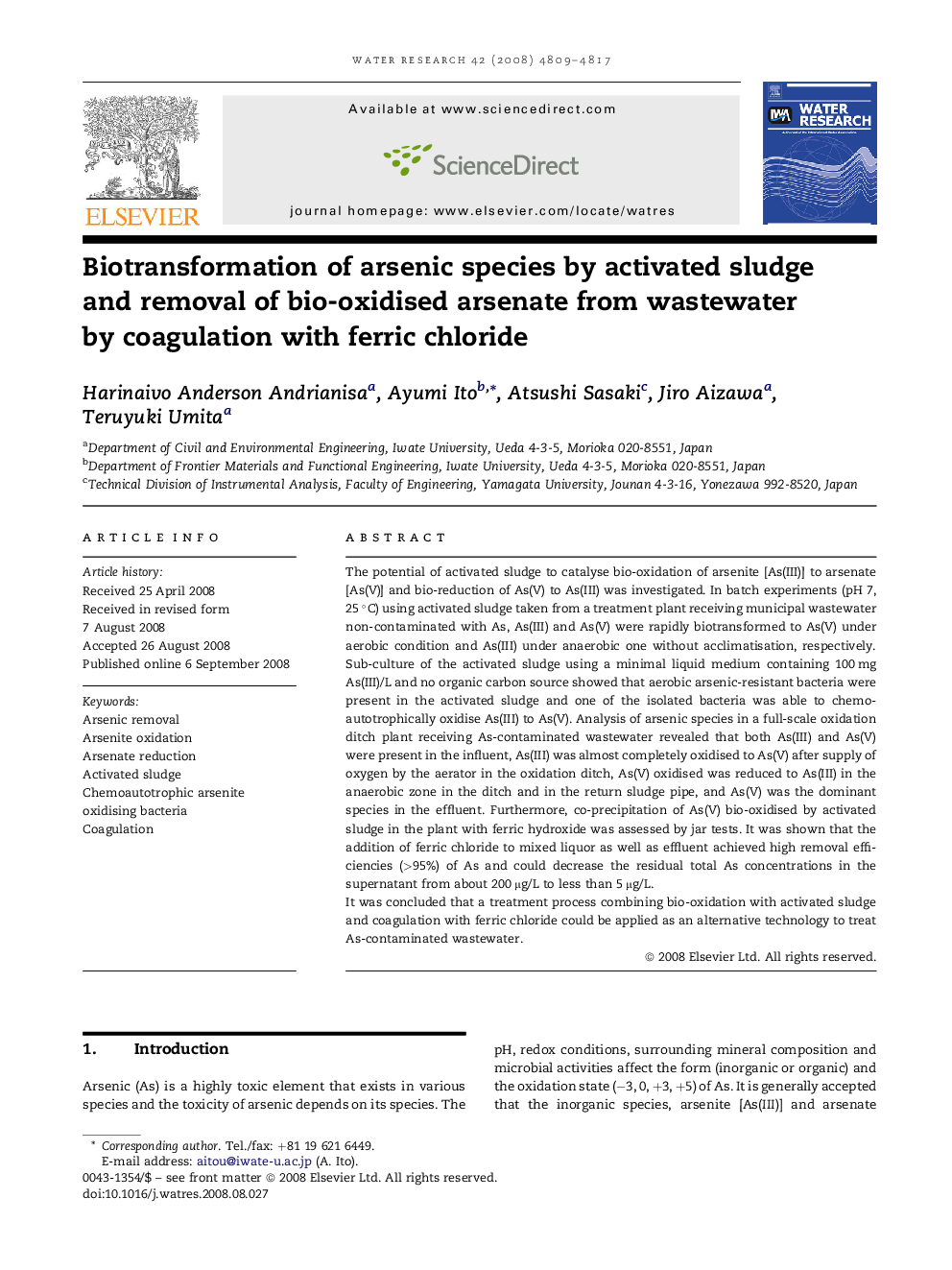| Article ID | Journal | Published Year | Pages | File Type |
|---|---|---|---|---|
| 4485639 | Water Research | 2008 | 9 Pages |
The potential of activated sludge to catalyse bio-oxidation of arsenite [As(III)] to arsenate [As(V)] and bio-reduction of As(V) to As(III) was investigated. In batch experiments (pH 7, 25 °C) using activated sludge taken from a treatment plant receiving municipal wastewater non-contaminated with As, As(III) and As(V) were rapidly biotransformed to As(V) under aerobic condition and As(III) under anaerobic one without acclimatisation, respectively. Sub-culture of the activated sludge using a minimal liquid medium containing 100 mg As(III)/L and no organic carbon source showed that aerobic arsenic-resistant bacteria were present in the activated sludge and one of the isolated bacteria was able to chemoautotrophically oxidise As(III) to As(V). Analysis of arsenic species in a full-scale oxidation ditch plant receiving As-contaminated wastewater revealed that both As(III) and As(V) were present in the influent, As(III) was almost completely oxidised to As(V) after supply of oxygen by the aerator in the oxidation ditch, As(V) oxidised was reduced to As(III) in the anaerobic zone in the ditch and in the return sludge pipe, and As(V) was the dominant species in the effluent. Furthermore, co-precipitation of As(V) bio-oxidised by activated sludge in the plant with ferric hydroxide was assessed by jar tests. It was shown that the addition of ferric chloride to mixed liquor as well as effluent achieved high removal efficiencies (>95%) of As and could decrease the residual total As concentrations in the supernatant from about 200 μg/L to less than 5 μg/L.It was concluded that a treatment process combining bio-oxidation with activated sludge and coagulation with ferric chloride could be applied as an alternative technology to treat As-contaminated wastewater.
